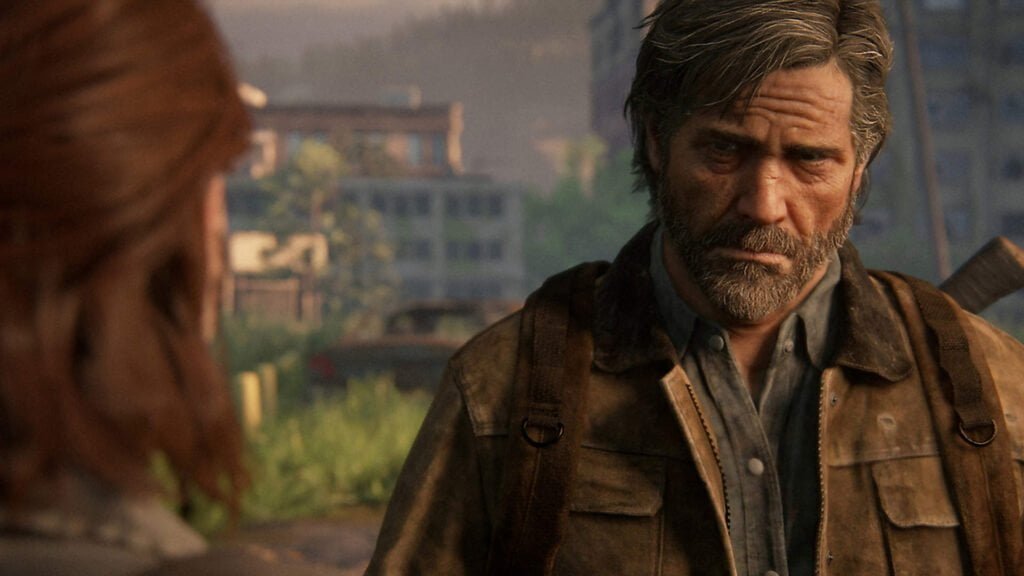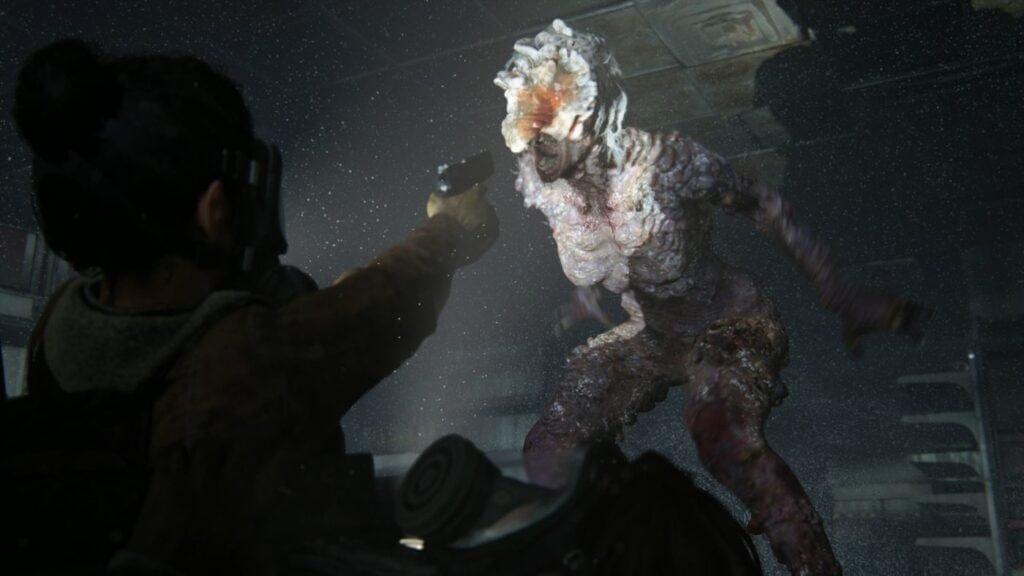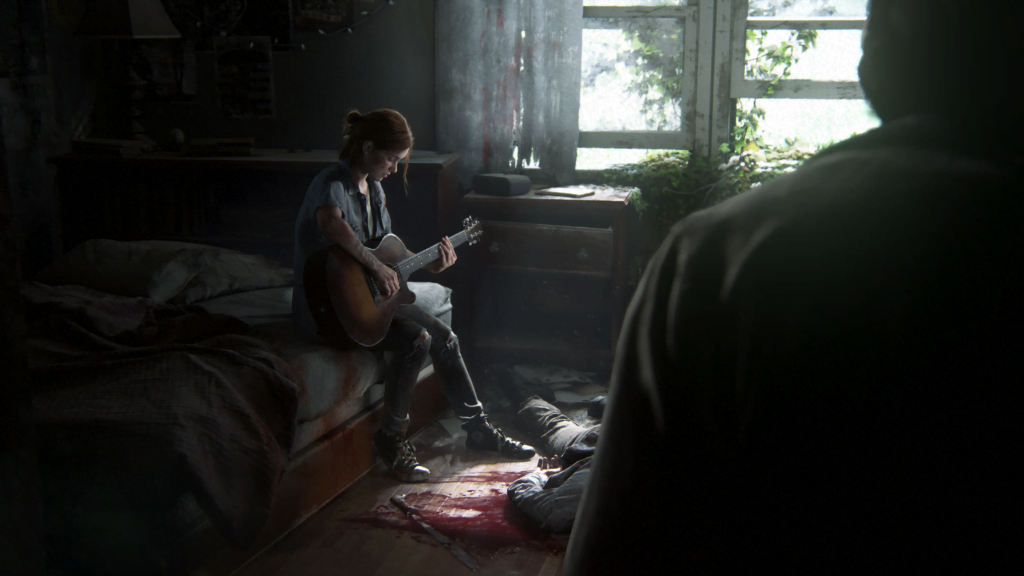(Reviewed on PlayStation 4)
*Disclaimer: This review was originally written as a member for One More Game and Xbox Gamer Dad, edited by co-founder Adam Potts and/or founder Matt Brook. A review code for this title was provided by OMG/XBGD. This review was written from my perspective with editor input. Click HERE to read this review as originally published on onemoregame.com.au*
Following up on a universally acclaimed title is a tall order and it is not the first or likely last time developer Naughty Dog will carry this particular burden. The Last of Us launched exclusively on the PlayStation 3 back in 2013 in a similar situation as it arrived as the sun was setting on that generation of consoles. 7 years later and The Last of Us: Part II arrives mere months from the dawn of the next generation. With the weight of a generation on the back of this extremely anticipated sequel, Naughty Dog were willing to fittingly lay it all on the line.
Picking up 4 years after the final moments of the first game, The Last of Us: Part II quickly establishes that this is Ellie’s tale with Joel taking the backseat in order to give her room to breathe and grow through the narrative, and become the primary playable main character after a strong and powerful opening cinematic that reinforces the lengths Joel has gone to protect Ellie. Seeing the world from Ellie’s perspective opens up the story on a more intimate and emotional level than could perhaps be told through the eyes of Joel. Older, wiser and full of experience in the bridge between the two titles, Ellie is masterfully established as a heroine that can hold her own. Capable and competent in combat, it is not necessarily the struggle for survival the Ellie wrestles with most but instead it is the personal relationships she shares with other characters that scare her more than the infected hordes that roam the apocalyptic wastelands of the United States. The burden of knowing she is immune to the infection torments Ellie and the impact this has on her emotionally fills her with guilt and the knowledge that this may not be accepted or believed by friends and strangers alike, forcing her to keep it to herself for her own safety and of those she cares about.

Troy Baker and Ashley Johnson reprise their roles as Joel and Ellie respectively, while Laura Bailey assumes the role of the newly introduced antagonist Abby. These breathtakingly excellent performances carry their characters through the emotionally charged and highly cinematic and interactive narrative that blends seamlessly in and out of the gameplay itself. The raw emotion these voice actors bring to the table injects the stakes and motivations of these characters with authenticity and intensity, allowing the player to truly invest in these characters and their experiences.

The lines are heavily blurred in regards to what or who is good or bad and it is the talent on display that helps the player sympathise in otherwise unsympathetic situations or to see that the different perspectives can paint Ellie as no different than those she is at war with. The inner struggle of these characters and the decisions they must make and justify can be bleak, confronting and instil a sense of unease. There are several moments littered throughout the approximately 25-hour story that are likely to cause varying levels of uncomfortability for the player. The emotional consequences of taking a life are visible and whether it is a means of self-defence, vengeance or rage, it has a different weight to it from each characters perspective. What is right and wrong is heavily subjective in The Last of Us: Part II and the key word to understanding that is one that can not be overstated enough; perspective.
Blending stealth, action, light platforming and survival horror elements to create the core gameplay loops, the player typically starts each of the 46 chapters with an objective to accomplish but doing so will always be a multi-faceted string of smaller objectives. With the exception of a small handful of instances, the player is accompanied by an AI character. The interactions between the different pairings results in moments of levity, character depth and understanding. Otherwise mediocre fetch quests become meaningful moments of exploration on both a character level and that of the world they inhabit.

Littered throughout the environments are notes written by survivors that provide insight to the horrors they have experienced of their lives post outbreak. Bleak and often depressing, it is these subtleties that further portray the world as broken as it has become and solidifies a theme of loss that no one has escaped. Scavenging resources and crafting components serve for crafting med kits, ammo variations and weapon reinforcements for instance and can also be used at workbenches your modify and upgrade any firearms, majority of which are hidden with a select few provided via story progress. Ammo too can be looted and is found in abundance on lower difficulties but can be very scarce on the harder modes. Supplements can be collected and used to upgrade an assortment of skill trees with new trees opening up when field manuals are found, offering new upgrades for the player and their stats.
As a result of the outbreak that happened prior to the events of the original game, the world has been overrun by an infection that turns its victims into zombie-like creatures of varying forms. Runners use line of sight to identify their prey and will pursue until that line of sight has been broken. Easily disposed of via melee combat with or without a weapon and gunfire. Clickers rely on sound to be triggered and can be easily disposed of by sneaking quietly behind them to perform an execution. Later in the game alternative forms of the infected appear and come with their own strengths and weaknesses. Human survivors are easily the deadliest as they are more aware, alert and active with their pursuit of the player. Armed with melee weapons and firearms, they communicate with their teams to flank and engage.

The ability to listen focuses on the player’s surroundings and a hazy white silhouette illuminates enemies. By using supplements to upgrade certain skills this range can be extended and the clarity of the enemies is more defined. This is very useful for some of the more stealth heavy segments throughout the game and allow the player to more strategically plan their attack instead of running in guns blazing. The latter approach still works effectively except when playing on the higher two of the five difficulties.

Every supporting character that Ellie interacts with is broken in some way. What these characters have endured has changed them for better or worse. What it takes to survive has asked them to do things they are not comfortable with, things they regret or don’t believe in but it feels as though a number of them have become numb to the atrocities they must commit to survive another day. Ellie feels more comfortable with these situations than her last outing as far as survival goes. It is when her emotions are drawn out and those she cares about are in the cross-hairs that she second guesses what she has done or has to do. Her arc is intensely personal and driven by firm motivations as the narrative unfolds.

Clever use of flashbacks at critical moments in the story either enhance Ellie’s current situation through a moment of relevance or can show a contrast in who she was versus who she has become. Ellie’s journey is heartbreaking, from when she was first introduced in 2013 to where finds herself now, all of her experiences and pain are the greatest asset for what she must overcome.
From the outset, The Last of Us: Part II’s jaw dropping visuals bring the post-outbreak world to life with stunning photorealistic backdrops, smooth and believable character animations, while at the same time painting the explorable landscapes as desolate, abandoned and hopeless. Once busy highways have overgrown with grass and weeds, inseparable from the pastures that ran parallel. Cars have become garden ornaments laced with the grass and vines. Built up areas of small rural homes and metropolitan CBDs are in varying states of decay, collapsed, ruined and heavily boarded and blocked by survivors prior to their eventual demise. The scenery can be harrowing, to imagine life as we know it has become nothing more than a memory to most. The character designs are immaculate and the supporting characters receive as much attention as Joel and Ellie for instance. Enemy design is great too whether human or infected, they look and feel as threatening and menacing as the characters make them out to be through dialogue and written notes.

The sound design is phenomenal, every sound effect, every weapon, every eerie and ominous beat of the score is perfect for the world that has been established. The beautiful acoustic guitar themes add to the emotion of the scenes and help tell the story by bringing a life of their own. The complete lack of music is also effective in a slew of moments to help drive the emotional impact of certain scenes.
Extremely brutal and confronting depictions of violence and explicit language reinforce that this experience is intended for adult audiences only. The heavy themes and some of the cut-scenes will challenge some players who perhaps are not quite expecting what unfolds before their eyes.
The Last of Us: Part II is brutal, violent, confronting and at times just outright depressing. The world that has been established is in a league of its own, brought to life by characters and performances that are phenomenal, engaging and genuinely interesting. Such an emotionally driven, highly cinematic and interactive experience is a once in a generation feat to pull off but it is one that Naughty Dog have masterfully accomplished.
Final Verdict:
+ Excellent character development and world building
+ Incredible visuals
+ Intensely emotional story
+ Excellent cinematics
– Mission length sometimes feels a little too long
Games of DAYNE Rating
Developed by: Naughty Dog
Published by: Sony Interactive Entertainment
Release Date: June 19 2020
Platforms: PlayStation 4




